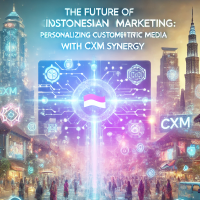
Globally, retail media spending totals USD 45 billion[1] and is expected to surpass spend on TV advertising by 2028. Interestingly, Search – which is considered the first digital wave – took 14 years to achieve USD 30 billion in ad revenue. The second wave of digital advertising, Social, took 11 years. Retail media has breached USD 30 billion in ad spend[2] in just 5 years. It’s no surprise then, that retail media is being considered the third wave in digital advertising.
Retail media plays a crucial role across the consumer journey, making it an essential touchpoint for brands to drive both awareness and conversion. In the era of Retail Media 2.0, the focus has shifted from a narrow emphasis on search-driven e-commerce to a more holistic, full-funnel approach that leverages the wealth of first-party shopping and streaming signals to power impactful advertising solutions. According to a study commissioned by Amazon Ads to Nielsen 68% of people who browse online visit Amazon.in to conduct research before making a purchase from a physical store. Marketers and agencies have taken note of this trend and are moving budgets to retail media from other media segments. As per the State of Media 2023 report, over 60% of retail media investments are from traditional digital and physical media budgets.
There are three key implications of the evolving retail media landscape for marketers and agencies. First, the rich insights derived from consumer shopping and streaming behaviors can provide brands with an unprecedented real-time understanding of their audiences’ needs and preferences. For example, Amazon Pi, which is a portal for brands to access consumer behavior trends, provides information on new and emerging search trends and the path to purchase. These can be leveraged to inform both marketing and advertising strategies. Second, the strengthening of video and other media advertising solutions on retail media can significantly enhance brand-building efforts, complementing the performance-driven capabilities that have traditionally defined the space. Third, the availability of advanced sales measurement and attribution solutions, coupled with the power of clean rooms, enables brands to holistically evaluate the impact of their media strategies across both online and offline channels. With tools such as Amazon Marketing Cloud (AMC), advertisers have access to a secure, privacy-safe, and cloud-based clean room solution, in which they can easily perform analytics across pseudonymized signals, including Amazon Ads signals as well as their own inputs. This can aid in helping understand engagement with media across various platforms better and in enabling assessment of cross-channel impact.
In India, Amazon introduced miniTV, which is a free ad-supported video streaming service offering differentiated content for young adults between 18 and 34. The ability to utilize first party shopping and streaming signals to deliver relevant reach and shoppable in-stream ads, differentiate miniTV from other incumbents in driving uplift in brand awareness and consideration metrics. According to a study conducted by Kantar regarding the impact of miniTV ads on brand value and awareness or mind measures[3]
, miniTV ads outperformed the benchmark across these metrics in 90% of cases.
In summary, retail media influences the customers’ purchase journey- both online and offline- which has led to a clear shift in advertising budgets from traditional digital formats to retail. Increasingly, brands have been embracing Retail Media 2.0 to maximize the impact and return on their marketing spend. With first-party insights, advanced measurement capabilities, and holistic advertising solutions, brands are realising new levels of consumer engagement and building strong brand resilience, to stay ahead of the curve in an ever-evolving landscape.
[1] https://www.emarketer.com/content/why-retail-media-will-third-biggest-wave-of-digital-advertising
[2] https://www.emarketer.com/content/ready-retail-media-2-0-why-2023-will-retail-media-s-inflection-point
[3] Mind measures: Unaided Brand Awareness, Aided Brand Awareness, Online Ad Awareness, Message Association, Brand Favorability, Purchase Intent.



















